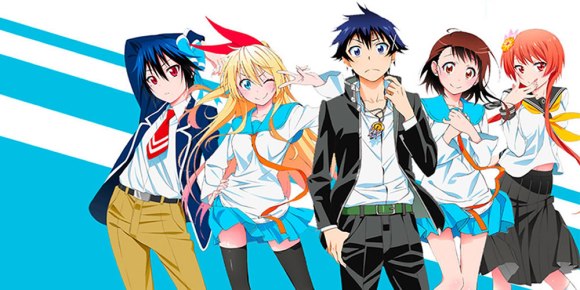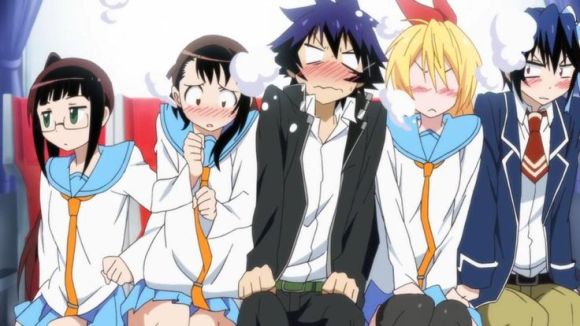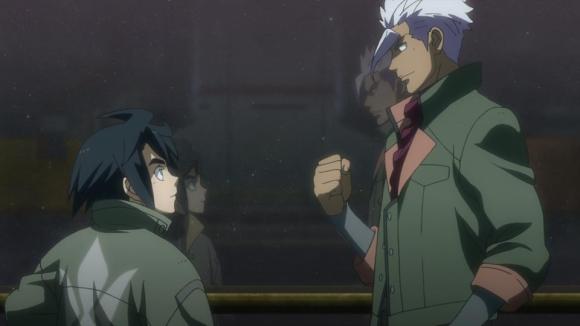Imagine two crime bosses coming together while their ranks fight it out in the streets. Instead of fighting themselves, they devise a plan to keep their city from falling apart from their gang wars. One of them offers a son, and the other his daughter. The plan—they start dating and the syndicates use it as a bridge to stop their fighting for good. The problem—their kids don’t like each other. This is the premise to Naoshi Komi’s 2012 hit manga and now anime called Nisekoi: False Love that currently runs in Weekly Shonen Jump magazine. This twist on the average love story has garnered much popularity and sparked 2 seasons of an anime and counting. Its premise seems simple at first, but add to that multiple love interests and a confused male hero and you’ve got yourself a hit rom-com that connects with everyone.
The story centers on Raku, a boy whose father runs the Yakuza in the area. He’s well-mannered, he cooks, he cleans, and he does well in school. All traits of most female characters. The other main character is Chitoge, a girl whose father runs the mafia in her part of town. She’s athletic, she’s often insensitive, and she’s super good looking. Traits of a typical male character in a love story. Together, they make our fake couple with the goal of keeping their family organizations convinced that they truly care for each other so the city doesn’t suffer. The only hitch is that they are complete opposites and can’t stand each other. This problem becomes the funniest and most compelling part of the story to watch and genuinely keeps you invested to the end.

What makes Nisekoi interesting lies in the premise’s ability to make its way into every part of the characters’ lives. And unfortunately, though it helps their families, it has some negative effects on their social lives. On top of the entire school touting them as a new power couple, Raku is unable to tell the girl he truly likes that it’s just a fake relationship. Of course, in true romance fashion, Raku has no idea that the girl he likes, Onodera, actually likes him back. To complicate it more, other girls fall in love and compete for Raku’s love which challenges Chitoge’s fake love. But what follows is not a tale of just competition, but honestly a tale of friendship and honesty. Each character’s affections for Raku only bring them closer to each other as they realize they all want the same things in a romantic partner. It also allows Raku to showcase his caring personality that reflects the idea that a truly good person will be good to anyone without having to have a reason.
Now, you’re probably wondering how is this in Shonen Jump? Where are the action pages and crazy super powers? I thought this was for boys who like action and not some Shōjo manga for girls? Well, here’s where Komi really shows his stuff. Certain characters in the mafia or Yakuza will showcase prowess beyond human belief. Chitoge even displays unearthly strength and athleticism and her bodyguard, Tsugumi, is actually a trained assassin. That’s right, assassin. It’s the mafia, so it works. The action here is rare, but the dosage is right on the mark for the magazine’s usual crowd and it always makes sense in the narrative. But what’s interesting is that a romance manga can be clever enough to be both semi-action oriented while also presenting itself as a non-typical romance story and get away with it in an action magazine for boys.
And it’s not just for boys! It’s easy to think that Chitoge or Onodera could end up as just eye candy for the male fanbase, but the modesty in which Komi draws them with is unheard of for the medium. Never are they presented as pinups or sexual figures. In fact, Raku ends up shirtless probably more times than any of them even approach the line of sexually appealing in an overt way. There are even other male characters that get the spotlight like Raku’s best friend Shu and he even gets his own love triangle too. This story is just as much for boys as it is girls in that it showcases both sides’ thoughts and feelings equally. What Nisekoi achieves is a balance between what both sexes would like to see in a manga about real relationships while maintaining the expectations of a shonen manga.

Onscreen, the anime does the series justice in that we get to see the humorous situations and reactions in real time, and it honestly translates better that way. Much of the humor of the series is in physical comedy, so the show really gets an advantage there. The anime covers everything almost perfectly and the art style is well-mimicked from the pages. No character feels flat at any time and the music always sets the scenes well.
If you’re interested in a funny and different kind of love story, then check out Nisekoi: False Love. It’s a must read for both Shonen and Shojo fans. If you’re like me and you get invested pretty quickly, you’ll even find yourself rooting for one of the girls in particular and hoping their dreams come true. I’m unashamedly on Team Chitoge.
You can check out both seasons of Nisekoi on Hulu and purchase the manga at any major bookstore.



